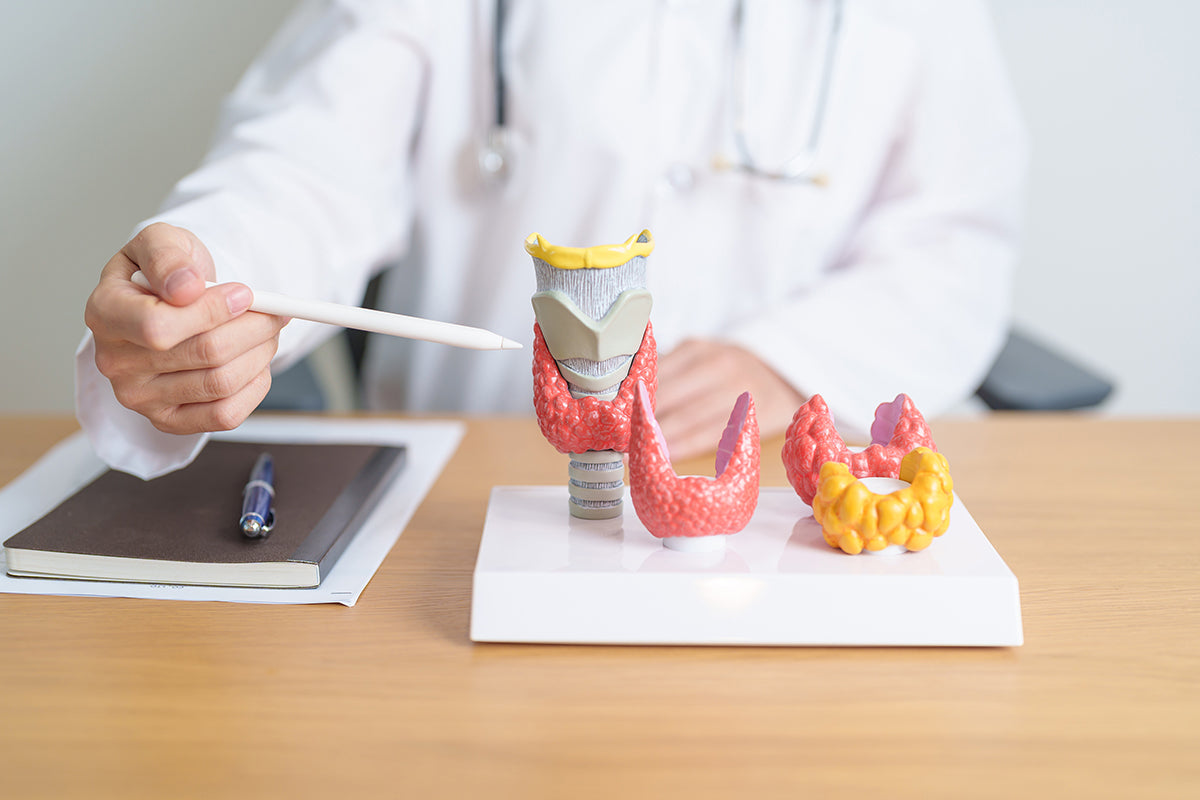
Hypothyroidism: when thyroid doesn't make enough hormones
|
|
Time to read 3 min
|
|
Time to read 3 min
Hypothyroidism is an endocrine system disorder characterized by the inefficient action of thyroid hormones in the body, primarily due to insufficient production in the thyroid gland (primary hypothyroidism). It can also occur due to insufficient stimulation of the thyroid gland by TSH (thyroid-stimulating hormone) caused by a disorder affecting TSH production in the hypothalamic-pituitary system (secondary hypothyroidism).
In areas where iodine intake is sufficient, chronic autoimmune thyroiditis (Hashimoto's thyroiditis) is the most common cause of hypothyroidism. Globally, iodine deficiency remains the leading cause.
Hashimoto’s thyroiditis is an autoimmune disease characterized by the production of antibodies against thyroid peroxidase (anti-TPO) and thyroglobulin (anti-TG). This leads to the progressive destruction of the thyroid gland and, consequently, its function becomes increasingly impaired. Thus, Hashimoto’s thyroiditis is one of the primary causes of primary hypothyroidism.
The symptoms of hypothyroidism are often nonspecific. However, they typically include:
If left untreated, additional late-stage symptoms may develop, including:
Hypothyroidism is more common in women and individuals over the age of 50.
The most frequent cause of hypothyroidism is thyroiditis (inflammation of the thyroid gland, as seen in Hashimoto's thyroiditis). In people with thyroiditis, swelling and inflammation damage thyroid cells. However, other risk factors include:
The healthcare provider will conduct a physical examination and may find an enlarged thyroid gland. Typically, serum TSH and free thyroxine (free T4) levels are sufficient to diagnose primary or secondary hypothyroidism. In primary hypothyroidism, TSH levels are typically elevated, while free T4 levels are reduced. In contrast, both hormones are often reduced in secondary hypothyroidism.
Sometimes the thyroid gland is of normal size or smaller than normal. The examination may also reveal:
Blood tests to measure thyroid hormones TSH and T4 are usually ordered. Specialized thyroid tests, such as anti-TPO or anti-TG antibodies, may also be required.
Other tests may check for:
The goal of treatment is to replace the missing thyroid hormone. Levothyroxine is the most commonly used medication. After starting treatment, the provider may check hormone levels every 2-3 months. Subsequently, thyroid hormone levels should be monitored at least annually.
There is no known way to completely prevent hypothyroidism. However, controlling iodine levels in the diet and adjusting them to the recommended amount is the only preventive measure available. This is because iodine plays a crucial role in thyroid gland function, being an essential element for the conversion of thyroglobulin into the two types of thyroid hormones: triiodothyronine (T3) and thyroxine (T4). Thus, iodine deficiency disrupts thyroid function and, if left untreated, can lead to hypothyroidism.
Hypothyroidism is a disease of the endocrine system characterized by the inefficient action of thyroid hormones in the body.
Hypothyroidism is mainly caused by poor production in the thyroid gland (primary hypothyroidism). It can also be caused by deficient stimulation of the thyroid gland due to a disorder that alters the production of thyroid-stimulating hormone (TSH) in the hypothalamic-pituitary system (secondary hypothyroidism).
Hashimoto's thyroiditis is an autoimmune disease characterized by the production of antibodies against thyroid peroxidase (anti-TPO) and thyroglobulin (anti-TG). This causes the progressive destruction of the thyroid gland.
The clinical manifestations of hypothyroidism are not very specific. Still, symptoms of hypothyroidism often include constipation, muscle pain, weight gain, and weakness.